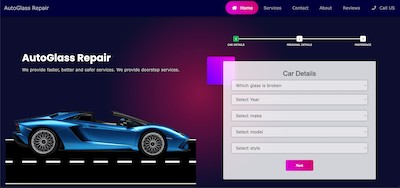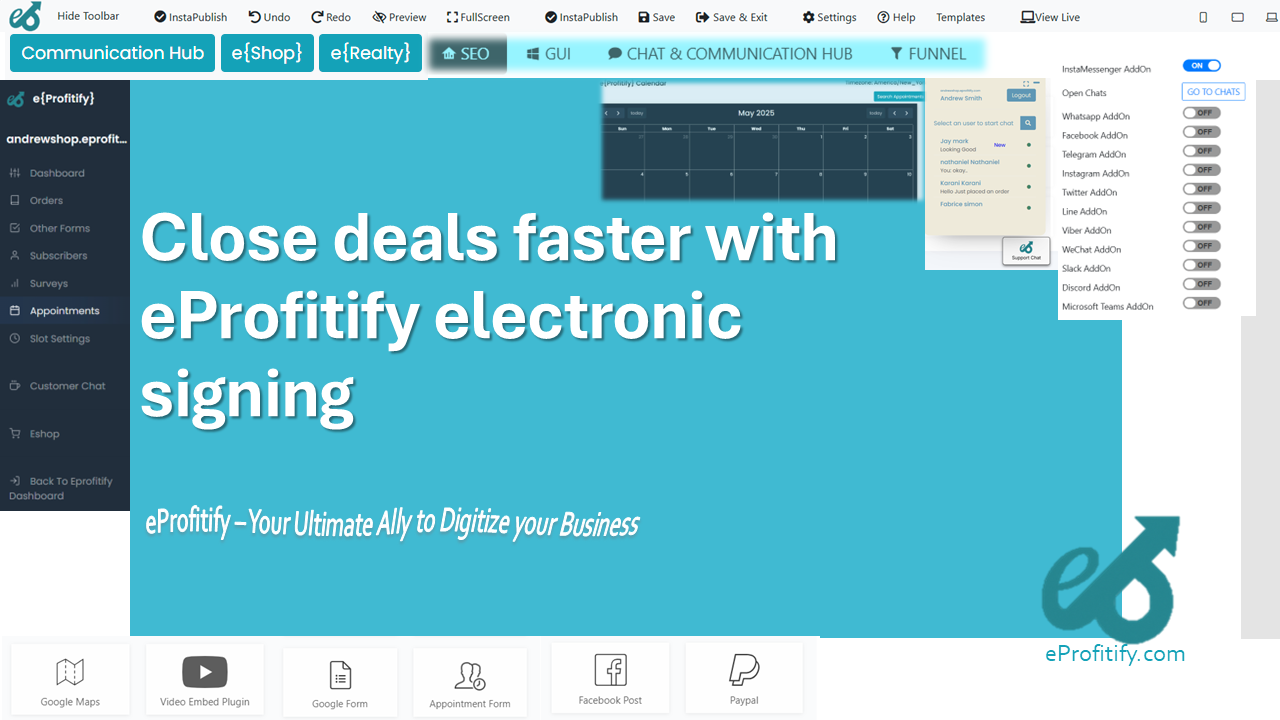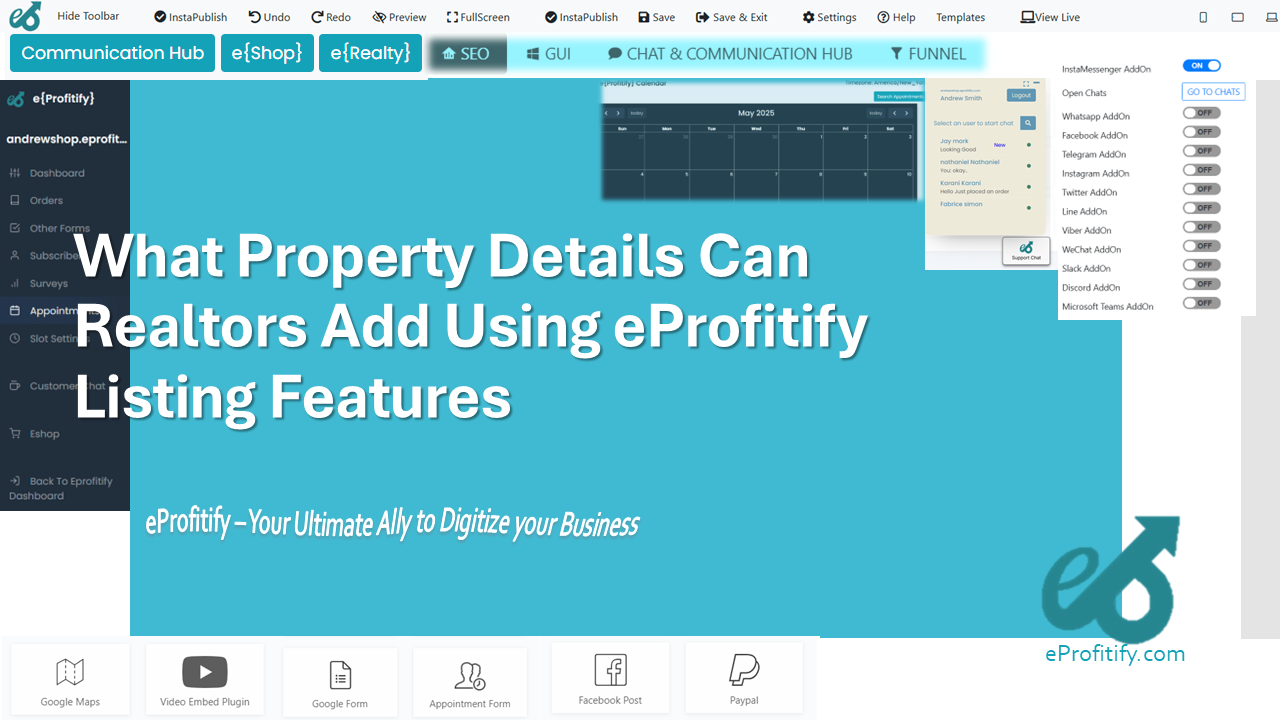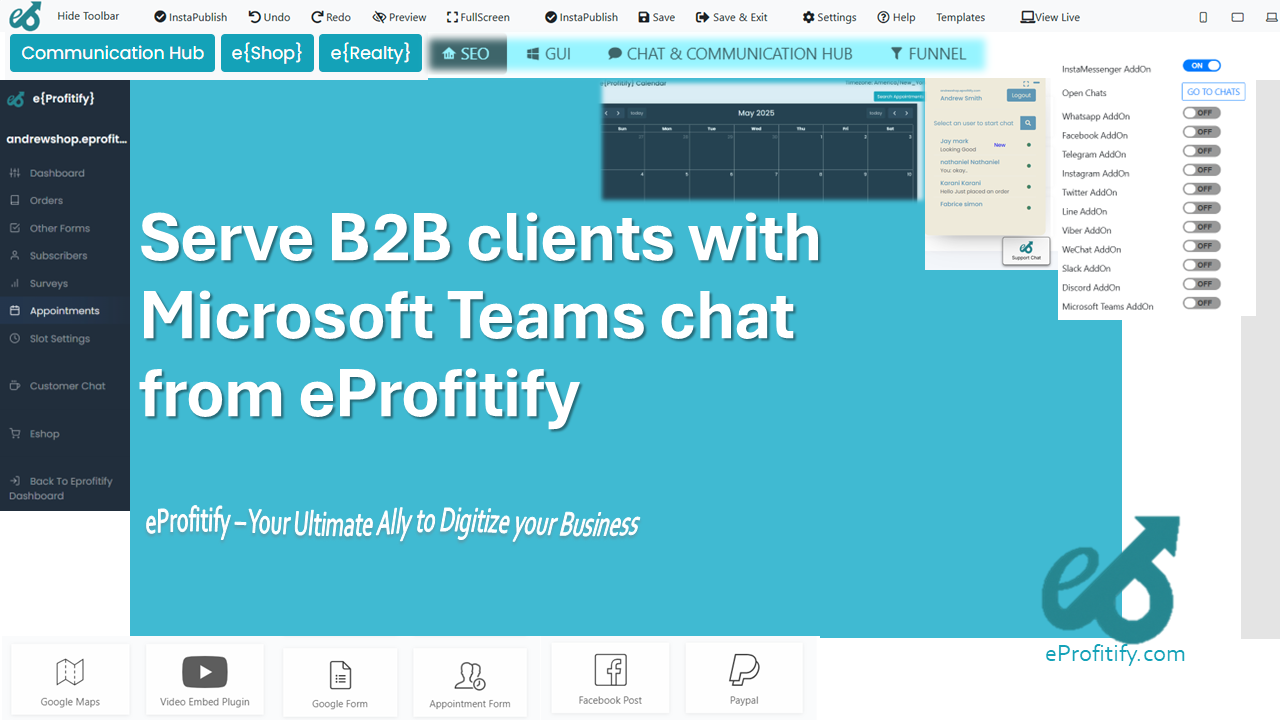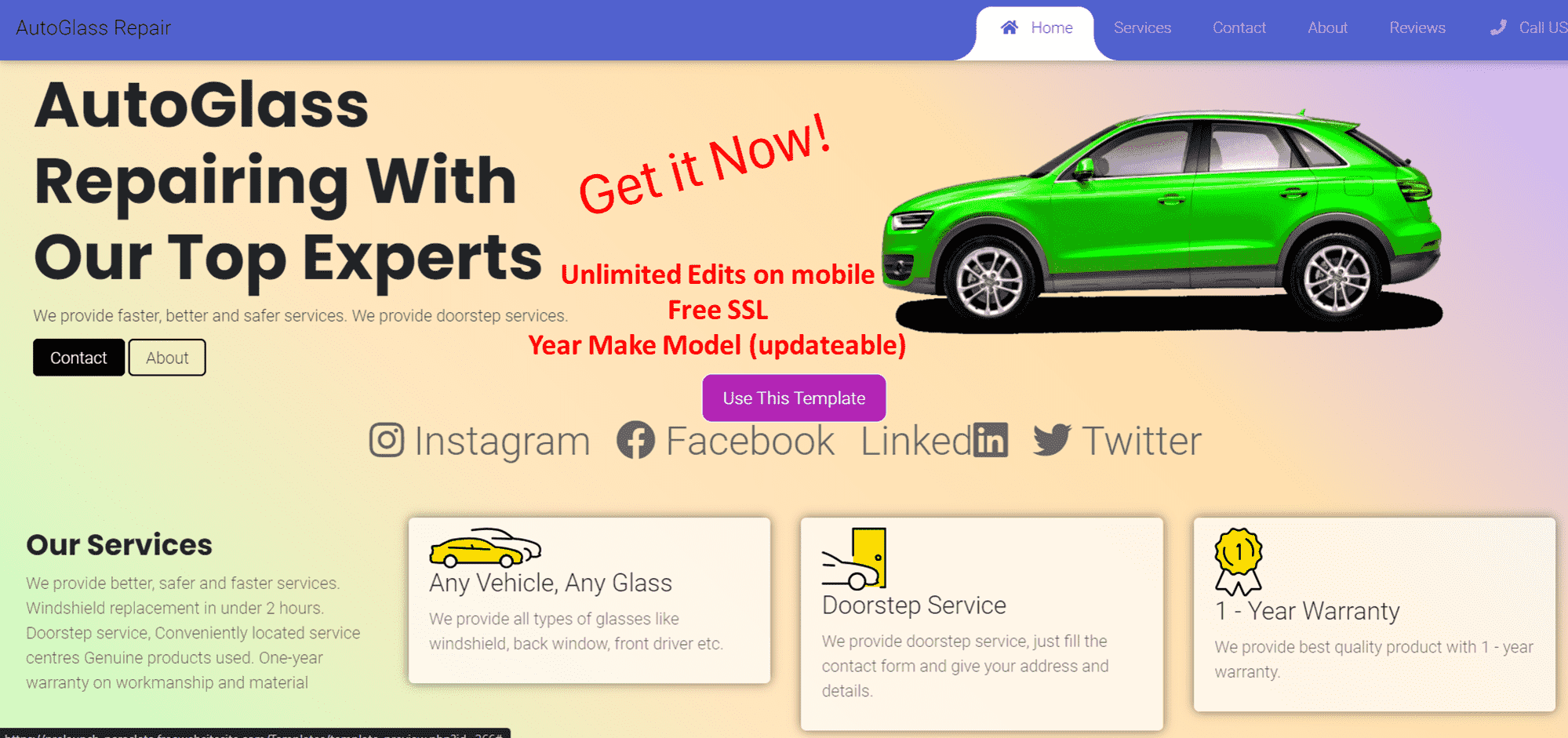Long Tail vs Short Tail Keywords Which Should You Use
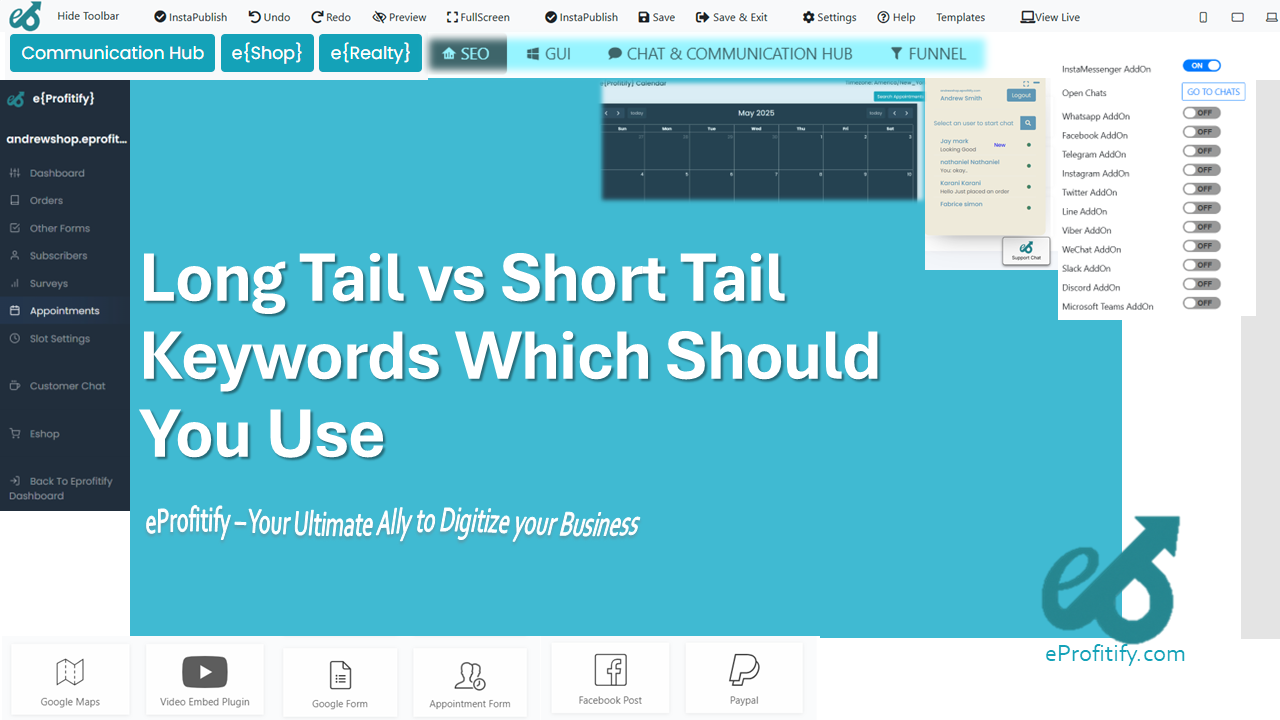
Schedule a LIVE Zoom call with an eProfitify Expert.
Long Tail vs. Short Tail Keywords: Which Should You Use?
In the dynamic world of SEO, understanding the nuances of keyword strategy is crucial for driving traffic, boosting conversions, and achieving online visibility. Two fundamental components of this strategy are long tail keywords and short tail keywords. Each serves distinct purposes, and leveraging them effectively can determine the success of your digital marketing efforts. This article explores the differences between these keyword types, their pros and cons, statistical insights, and how platforms like eProfitify—a leading website publishing and management tool—can optimize your SEO strategy with features like instant messaging, appointment management, ecommerce integration, and CRM.
Understanding Long Tail and Short Tail Keywords
Short Tail Keywords
Short tail keywords are broad, concise phrases typically consisting of one to three words. Examples include "running shoes," "SEO tools," or "digital marketing." These keywords generate high search volumes due to their generality but are highly competitive. Businesses often target them to increase brand visibility or capture a wide audience.
Long Tail Keywords
Long tail keywords are specific, longer phrases (four+ words) that cater to niche audiences. Examples include "best waterproof running shoes for flat feet" or "affordable SEO tools for small businesses." Though they attract lower search volumes, they are less competitive and often have higher conversion rates due to their specificity.
Pros and Cons: Short Tail vs. Long Tail
| Aspect | Short Tail Keywords | Long Tail Keywords |
|---|---|---|
| Search Volume | High | Low to Moderate |
| Competition | Extremely High | Low |
| Conversion Rate | Lower (Broad intent) | Higher (Specific intent) |
| Cost-Per-Click | Expensive (e.g., $50+ for "insurance") | Affordable (e.g., $5–$20 for niche phrases) |
| Traffic Quality | Less targeted | Highly targeted |
Statistical Insights
- Search Query Distribution: According to Ahrefs, 92% of all search queries are long tail, comprising three or more words.
- Conversion Rates: Backlinko reports that long tail keywords have a 64% higher conversion rate than short tail terms.
- Content Depth: The average first-page Google result contains 1,447 words, emphasizing the need for detailed content optimized for long tail queries.
- ROI: Businesses focusing on long tail keywords save up to 40% on PPC costs while achieving 2.5x higher click-through rates (WordStream).
When to Use Short Tail Keywords
- Brand Awareness: Short tail terms like "CRM software" help attract a broad audience.
- High Traffic Goals: Ideal for businesses aiming to rank for competitive industry terms.
- Homepage Optimization: Use broad keywords to capture general search intent.
Risks: High competition can lead to skyrocketing ad costs and lower ROI if not paired with a robust content strategy.
When to Use Long Tail Keywords
- Niche Targeting: Address specific customer needs, such as "CRM for ecommerce startups."
- Local SEO: Phrases like "organic coffee shop in Austin" attract geographically relevant traffic.
- Content Marketing: Blog posts and guides thrive with long tail queries, driving qualified leads.
Impact: 58% of B2B marketers say long tail keywords generate the most significant ROI (HubSpot).
Integrating Both Strategies with eProfitify
Balancing short and long tail keywords requires advanced tools. eProfitify simplifies this process through its all-in-one platform, offering:
- SEO Analytics: Track keyword performance metrics for both short and long tail terms.
- CRM Integration: Analyze customer data to identify trending queries and personalize content.
- Ecommerce Optimization: Automate product page SEO with long tail keywords like "wireless headphones under $50."
- Instant Messaging: Collaborate with teams in real time to refine keyword strategies.
- Appointment Management: Schedule content updates aligned with keyword trends.
For example, eProfitify’s analytics dashboard reveals that pages targeting long tail keywords retain visitors 3x longer than those optimized for short tail terms. Its CRM tools also segment audiences, enabling hyper-targeted campaigns using phrases like "budget-friendly project management tools for remote teams."
Conclusion
While short tail keywords are essential for visibility, long tail keywords drive conversions and sustainable growth. A hybrid approach, supported by tools like eProfitify, ensures you capture broad traffic while delivering personalized experiences. By leveraging eProfitify’s CRM, ecommerce integrations, and SEO analytics, businesses can dominate both generic and niche markets efficiently. In an era where 53% of consumers expect personalized content (Salesforce), mastering keyword strategy with advanced tools is no longer optional—it’s imperative.

